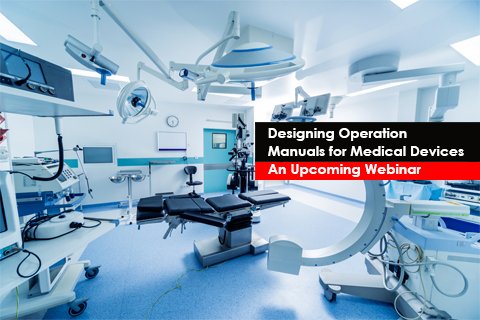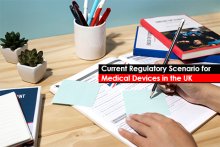An operation manual is in many ways referred to as labeling, Instructions for Use (IFU), or a user guide. It is a document that is instrumental in achieving the safety of a medical device and illustrates the general ways to use or operate a medical device.
A medical device’s operation manual is mainly designed for the intended audience. It sets the tone to write content specific for the audience that is free of technical jargon and easy to understand. There are several ways to perform audience analysis; it can be done via a combination of techniques, such as focus groups, interviews, field research, and contextual inquiries, among a host of others.
An often-ignored aspect of designing an operation manual is the formatting or the style sheet. Well-written content might not have the desired impact if the formatting falters. Formatting includes setting the flow of content, aligning with the product specifications, placement of tables, images, and other graphics to make the content easy to perceive and understand.
Designing a usable operation manual involves selecting appropriate content, layout, formatting, and use of graphics. Operation manual usability becomes even more critical if a product requires complex actions of the user, has confusing steps, or has the potential for harm. The operation manual is the output of multiple processes, considerations, and requirements. The top components to consider when writing operation manuals for medical devices include the following:
- The intended use
- The risk management process
- Standards
- General safety and performance requirements
- Legal and product requirements
- Operation and maintenance instructions
- Glossary
Apart from the components that must be part of an operation manual, there is more to consider in order to make these components usable and understandable. Below is a non-exhaustive list of usability design requirements for operation manual development. It may not be relevant to all products; rather, it acts as a starting point for considering the usability of your product, given its unique risk profile, indication(s) for use, and specific user/user environment.
- Use short, concise, and action-based sentences.
- To avoid missing steps, prepare an accurate list and present one action in each item.
- Label all the key components in diagrams to minimize confusion.
- State or depict expected outcomes of actions.
- Define any necessary technical words and create a glossary list.
- Specify units to avoid misinterpretation of abbreviations (e.g., “5 seconds” versus “5s”)
- Redundantly present critical information in a “Frequently Asked Questions” (FAQ) section, within relevant steps, to minimize reliance on memory.
- Provide images that match the textual information in the instructions while accurately depicting the proper use of the product.
- Select a font size that is legible during use.
- Consistently associate information categories with visual cues to avoid critical information being overlooked or misinterpreted by users (e.g., if some actions are numbered steps, all actions are numbered steps).
Most importantly, for Medical Devices as well as in the Pharmaceutical and Healthcare industries, operation manuals must confine to the regulations for the respective region/country. Information specific to the Regulatory requirements must be mandatorily included; without which the operation manual will not be approved for usage in respective region.
Unlike some kinds of technical writing, content for operation manuals includes an additional challenge – How to interpret the compliant regulations you are working with? There are different requirements for the components of an operation manual depending on a country’s regulations. The EU countries have their relevant EU regulations, and it is the US Food and Drug Administration (USFDA) and Code of Federal Regulations (CFR) in the USA. This also depends on what the device actually is and what it does. Is it software or surgical equipment, or home-health device?
Designing operation manuals for medical devices is more than just technical writing. It is about gathering and analyzing technical, marketing, compliance, legal and quality information and structuring and developing content to publish, distribute, and maintain it. It inevitably involves collaboration and working closely with several departments.
Most operation manuals are long and tedious, but it is important to include information in order to pass through country regulations and to ensure the safety and effectiveness of the medical device throughout its use. Are you willing to learn more about medical device operation manuals and uncover the best practices for developing operation guides that prioritize patient safety while optimizing device use?
Register for Freyr’s exclusive webinar - https://www.freyrsolutions.com/webinars/designing-operation-manuals-for-medical-devices.





